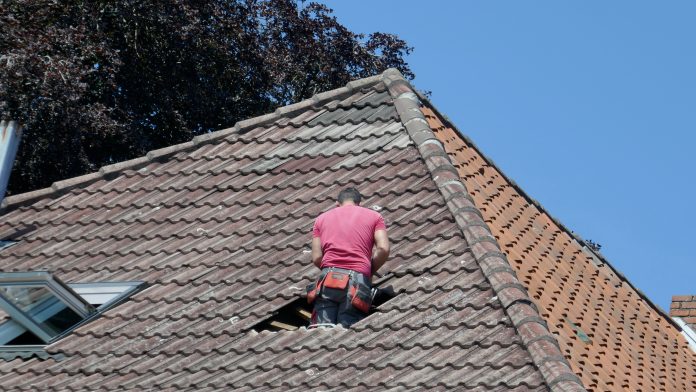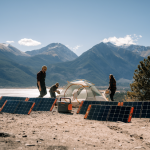Working on your roof can be a dangerous task, but sometimes it’s necessary. Whether you need to replace broken shingles, clean gutters, or install solar panels, it’s important to prioritize safety. Climbing up onto the roof without any prior knowledge can lead to serious injury or even death. That’s why we’ve put together a list of roofing safety tips. In this post, we’ll go over the do’s and don’ts of safely working on a roof.
Table of Contents
Do
Use a Sturdy Ladder
Your ladder should be made of sturdy materials and have a weight capacity that can support both you and any tools or materials you’re carrying. Make sure the ladder is secure and in good condition before climbing up. If possible, have someone hold the ladder steady while you climb.
When looking for the best ladder for your project, consider the structure of the roof and the weight capacity you’ll need. Make sure it’s made with sturdy materials such as aluminum or fiberglass, as these are less likely to break or bend under pressure.
Consider also what type of ladder is most suitable for your job—telescoping ladders, step ladders, multi-position ladders, and more. Check the ratings for load capacity and safety features such as slip resistant steps and a locking mechanism to keep it secure. With the right ladder in hand, you’ll be able to work on your roof with greater confidence and safety.
Don’t
Work on Your Roof Alone
It’s always a good idea to have someone on the ground in case of an emergency. They can also assist you with passing tools and materials up and down the ladder. If you’re the one on the ground, keep an eye on the person on the roof and be ready to call for help if necessary.
Working on a roof is inherently dangerous, and it’s important to educate your partner on the proper safety precautions. Encourage them to read up on roofing safety tips online or watch instructional videos about safety when working at heights. It’s also helpful for you both to attend a local seminar or take a class together that covers safety techniques for climbing onto and working on a roof.
Finally, make sure your partner wears the proper safety gear such as a helmet and harness when climbing up onto your roof. Taking the time to educate your partner on roofing safety can ensure that you both remain safe while working.
Do
Wear Non-Slip Shoes With Good Traction
This will help prevent slips and falls on the roof. A good choice is work boots or athletic shoes with rubber soles. Avoid wearing shoes with leather soles or anything that could be slippery on a pitched roof.
The best non-slip work shoes will have rubber soles and a variety of features for added safety. Look for shoes that are made of strong materials such as leather, nylon, or canvas. The sole should be thick to provide traction on wet and slippery surfaces, while the upper should be lightweight and breathable.
Make sure the shoe fits well so it doesn’t slip off your foot while working. You can find a wide selection of non-slip work shoes at most local shoe stores, hardware stores, and online retailers. With the right shoes on your feet, you’ll be able to work on the roof with greater confidence and safety.
Don’t
Work on Your Roof During Inclement Weather
Rain, wind, and snow can make the roof surface slippery and increase the risk of accidents. Wait for good weather conditions that will give you better footing and visibility. Always check the weather forecast before planning any roof work.
The urge to get a roof job done as soon as possible can be strong, but it’s important to resist the temptation and wait for good weather conditions. Working on your roof in inclement weather is dangerous due to slippery surfaces, poor visibility, and potential wind gusts that could knock you off balance.
If you absolutely must work in bad weather, take extra care to wear proper safety gear, such as non-slip shoes with good traction, and never attempt to do the job alone.
Do
Use Safety Equipment at All Times
Wear a harness and secure it to a stable anchor point. This will help prevent falls and keep you safe if you slip. Use safety ropes or barricades around the roof’s perimeter to alert others and keep them from accidentally falling off.
You can find a range of safety equipment for working on your roof at most hardware stores, home improvement centers, and online retailers. Look for things like protective harnesses or full-body harnesses that are designed to keep you secure while working at heights.
Other essential safety gear includes hard hats, gloves, eye protection, and non-slip footwear. Make sure to purchase quality equipment from a reputable source that meets the safety standards of your local area. With all the right safety equipment in hand, you’ll be able to work on your roof with greater confidence and peace of mind.
When in Doubt, Call an Expert
If you’re not completely sure how to safely work on your roof, it’s best to call in a professional. A licensed roofing expert will have the experience and tools needed to get the job done right with minimal risk of injury or damage. They can also advise you on proper maintenance and repair techniques, so future jobs will be easier and safer.
Working on a roof can pose a significant safety risk if you’re not careful. By following these do’s and don’ts, you can reduce that risk and stay safe while getting the job done. If you’re ever unsure about what to do, it’s always best to hire a professional who has the experience and equipment to get the job done safely. Stay safe and good luck with your roof repairs!



















